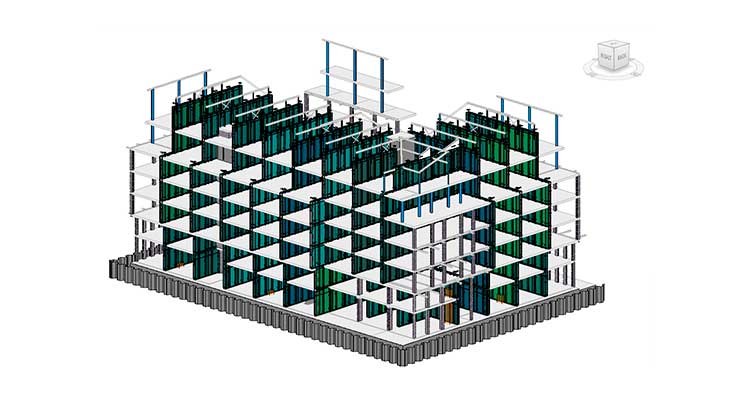Modular Formwork Construction - A Success Story

Modular formwork has been the new buzzword in the construction industry over the past few years. Construction companies adopt this new way form of construction due to the benefits it offers in terms of speed, accuracy, efficiency, overall quality of output and life span of the construction project.
Would you like to know how you can improve the output quality of your project by 100% and reduce production time by 20%?
A leading formwork supplier in Amsterdam specialized in manufacture and supply of modular wall and tunnel formwork. As a recognized industry leader, the company had significantly raised the bar for efficient building processes with Formwork.
So what is Formwork and why is it preferred?
Formwork in construction jargon is the process of creating an impermanent mold into which concrete material is poured. As against this, the conventional construction method uses timber, plywood or particleboard which assumes permanence and is not easy to modify.
Traditional construction is the first choice in places where labour costs are lower than cost of reusable formwork. However it is too time consuming and has a shorter life span as materials can warp and shrink. Repeated usage also poses a major safety hazard.
Formwork options such as steel formwork and tunnel formwork counter these disadvantages by way of higher speed, accuracy, efficiency and life span. The modular nature makes it durable and safe while providing a high-end finish to concrete.
Let’s come back to our business case
With business booming, it became a task for the company to get accuracy in modelling the formwork along with general arrangement fabrication drawings (GA’s) which show the overall structure or composition of the building. It started affecting their daily operations and it became quite expensive to train or hire resources competent to work on new software.
Another drawback was that they had to stick to the same module, as any new change would require a new module to be made which would add to the time and expense. A typical (but pretty much prevalent locally) challenge was absence of BIM literacy.
The second option was partnering with a BIM implementation company. The scales tilted in favour of the second option.
The project chosen for the partnership was construction of 22 floors of a commercial building. And the business partners chosen after multiple screening rounds on various parameters was Hitech CADD Services. Hitech had a track record of working with over 3000 clients across 50 countries and over 5000 successfully completed projects.
The project commences
Hitech CADD Services was handed over the PDF files, DWG’s and basic models (.rvt/ifc) as input. The project was one of its kind and involved onsite training. Difference in languages stood as a major hurdle in the process of documentation and communication. This barrier was overcome when a team of experts from Hitech visited the company’s site. The onsite visit facilitated face to face interaction with clients and a better understanding of project requirements. They got better clarity on filling the model with formwork (wall/tunnel) and its support end parts and were sensitized to the need for accuracy.
The challenge then was to create a 3D model with general arrangement and fabrication drawings with part count. Revit Integration with calculations & site conditions needed to be done. Equally important was thorough planning of material and incorporation of formwork with safety measures on site.

Structural Model as input
The project seamlessly moves through training, better planning, better visualization of clashes, accurate numbering and sequencing of elements to dynamo automationThe input files received in BIM 360 were submitted as output on the same platform. The software used included Revit and Automation Tools. This greatly facilitated the client in smooth and hassle free documentation, with full sheet setup. The client was extremely satisfied with dynamo automation and the proactive approach of Hitech CADD Services.
- A 3D model with formwork in Revit with LOD 450 and all necessary supporting parts
- Accurate count of all the parts used in project to execute onsite on a daily basis
- General arrangement drawings (GA) of every wall with precise details
- Accurate and precise production drawings

Structural Model with Formwork
A win-win situation for Hitech and client
The cost and time optimized beautiful 22-storeyed - building represented not just advancement in construction processes, but also established Hitech’s competency in delivering technology enabled building services. Contemporary formwork systems, which are typically modular, are planned and designed for accuracy, speed and efficiency. They are engineered in such a manner that there is minimum wastage in construction. Most of them come with built-in and greater health and safety features. The overall financial cost can be decreased by reducing cycle time.
Hitech was able to develop a long-term relationship with the client company by offering automation services for future collaborative work and projects.
Authored by:
Harika Singh is an academician and published writer. Her passion for engineering and technology reflects in the in-depth coverage she provides on technology trends. 20 years of work association with institutes of repute across India and the US positions her to provide valuable insights to business stakeholders on achieving scalability and operational efficiencies through digitalization.












